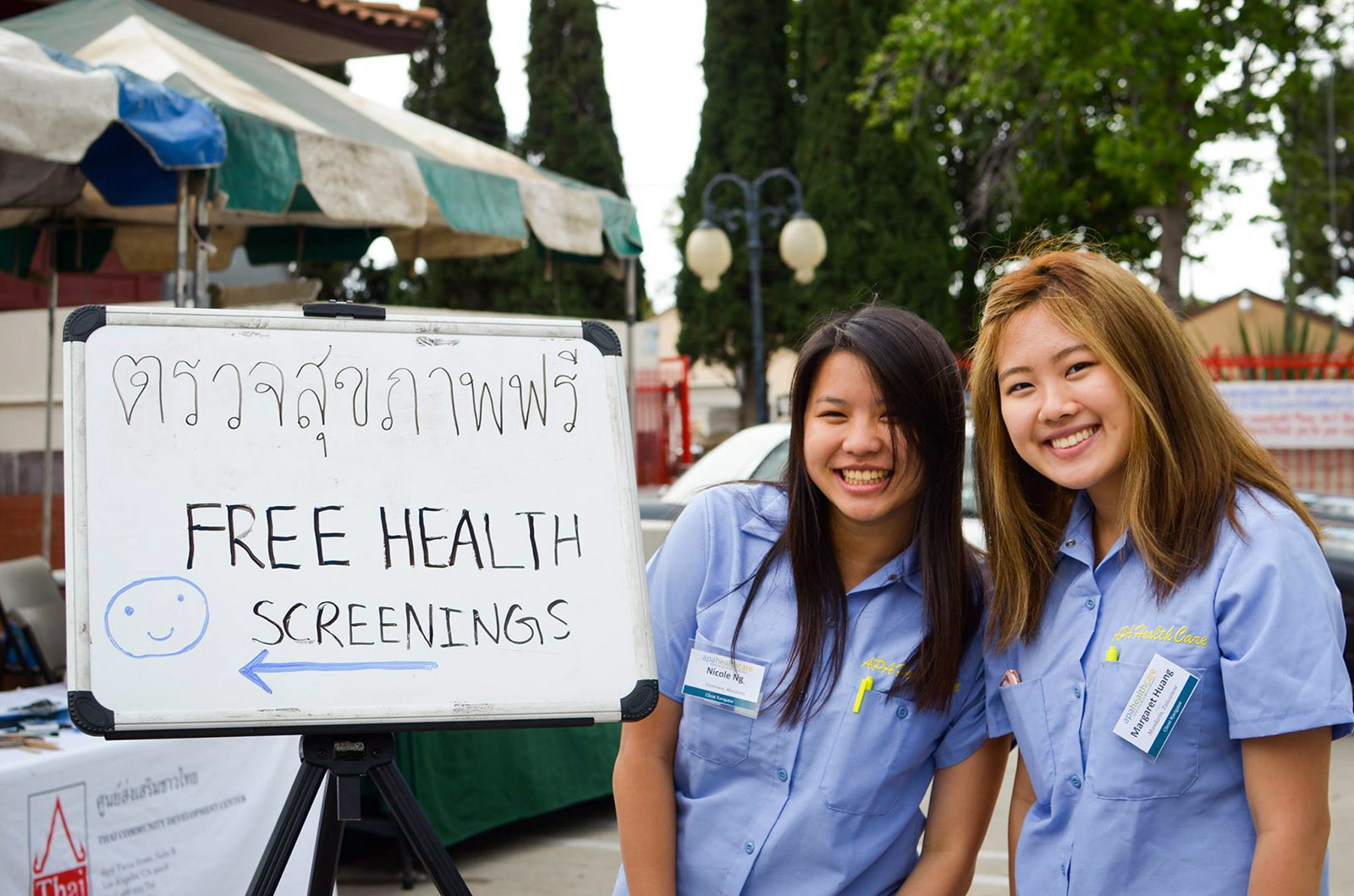UCLA club brings health clinics to Asian-American communities

APA Health CARE hosts clinics that aim to teach patients how to prevent diseases that tend to affect Asian-Americans more than others. (Courtesy of APA Health CARE)
Two weekends ago, a client walked into a health clinic for a basic health screening. Hours later, he was rushed to the hospital for abnormally high blood pressure.
Ross Mudgway, president of Asian Pacific Americans Health Collaboration, Access, Resource and Education, or APA Health CARE, works with other club members to host several clinics like this one. The clinics aim to teach patients about preventative health care treatment for diseases that disproportionately affect Asian-American communities.
Certain diseases such as hypertension and heart disease occur more in Asian-American immigrant communities, said Dr. Neil Chawla, a family medicine physician at the Kaiser Permanente Los Angeles Medical Center. He added Asian-Americans are also diagnosed more frequently than other groups with hepatitis B, tuberculosis and diabetes.
APA Health CARE establishes health fairs in local communities with large populations of Asian-Americans, including San Gabriel Valley, Alhambra, Hacienda Heights and Hollywood. Mudgway, a fourth-year psychobiology student, said the club collaborates with the David Geffen School of Medicine at UCLA, the UCLA School of Nursing and the UCLA Fielding School of Public Health to set up about 10 free health screenings every year.
“The most impactful moments are when we can provide free screenings for patients who don’t have health insurance,” Mugdway said. “We can give them a health check and speak their language.”
Asian individuals make up the majority of 350 million people who have hepatitis B in the world, said Koy Parada, a UCLA Extension public health professor who researched health disparities in Asian-American communities. Diseases such as high blood pressure lead to hypertension and hepatitis B, which disproportionately affect the Asian-American population. Parada added May is Asian-American and Pacific Islander Heritage Month and Hepatitis Awareness Month.
Rebecca Chen, an APA Health CARE member and first-year physiological science student, said her parents, who were born in Taiwan, likely have hepatitis B because Taiwanese hospitals did not administer hepatitis B vaccines to infants at the time.
Chen said her parents do not currently exhibit symptoms, but potential complications, such as cirrhosis, or scarring of the liver, could be life-threatening.
“(Their disease) has come to mind more often because I am worried about my parent’s health as they get older,” Chen said.
Chawla said some Asian-American groups are genetically predisposed to diseases – for example, South Asians are more likely to have cardiovascular disease. He added some diseases result from cultural factors, such as high-salt and high-fat diets.
Environmental factors also affect predisposition to diseases, Chawla said. For Japanese-Americans, stomach cancer is more prevalent in elderly immigrants because of radiation from World War II.
Kathy Chang, the health education director for APA Health CARE, said the club also attempts to counteract the myth of Asian-Americans as a model minority, which she thinks is largely present in Los Angeles where there is a large Asian-American community.
Chang, a third-year physiological science student, said the club distributes materials and conducts seminars in languages predominantly spoken in each community, such as Chinese, Vietnamese, Thai and Korean. She added the club focuses on giving clients long-term skills, such as learning how to talk with community physicians and understanding the health care system.
“We hope to not see the same clients at the health fair,” Chang said. “We want it to be a connection point (through which they can) access regular care.”
Chawla, who has volunteered at health fairs with APA Health CARE since 2011, said his task is to facilitate patient advocacy by encouraging them to see their own doctors and teaching them how to work around their linguistic barriers.
Mudgway said each health fair is catered toward a specific Asian group such as Korean, Japanese or Chinese individuals. He added he remembers a young female client who was afraid to tell her parents she had an STD.
“In Asian culture, it is frowned upon for women to say they’re not healthy, but this club wants to encourage people to speak up,” Mugdway said.
When club members conduct preliminary health screenings for patients, they attempt to modify their health suggestions to pertain to Asian-American culture, Chen said.
“We don’t tell them to not eat pizza and hot dogs (in order to prevent hypertension), we tell them to cut down salt, cut down MSG,” Chang said.
Karen Duh, a staff member at the First Evangelical Church of San Gabriel Valley, where APA Health CARE hosted a health fair, said she noticed many of the attendees’ busy schedules prevented them from accessing regular health care.
“The problem is most of the immigrants (who attended the fair) are so busy working they don’t have time to see their doctors,” Duh said. “They don’t pay attention to their health.”
Chawla said Asian-Americans represent around 5 percent of the population, but they currently have the highest rate of population growth. He said he thinks health studies should focus more on Asian-Americans because the population is growing most rapidly.
Parada said she thinks it’s uncommon for families to visit doctors unless they are ill, which results in a lack of preventative health screenings for cancer and other diseases such as hepatitis B.
“The challenge is there are no symptoms,” Parada said. “Hepatitis B is a silent killer.”
Chawla said he and APA Health CARE plan to help sign patients up for appointments at the health fairs so they can go straight to clinics afterward.
“(APA) has a lot of trust within the communities (they work in),” Chawla said. “It’s great to be able to inspire and mentor these students to do this kind of work.”



